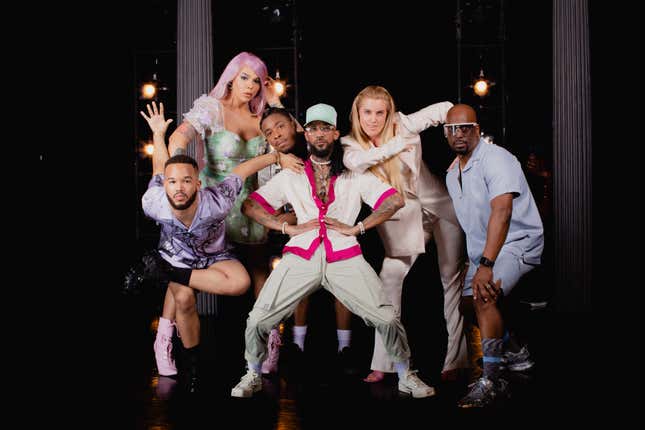
The general public knows what the ballroom scene is through television, most likely Emmy-nominated show Pose. What some fail to remember is that these visualizations are reflections of real life and real experiences of LGBT individuals. Also, the culture of the ballroom is precious to the community and needs to be respected, never replicated.
Zenith and Jelani of House of LaBeija (and from HBO Max’s Legendary) as well as SEVNDEEP and Jourdon from online group ‘Ballroom #Clips #Dips #Tea’ spoke with The Root about how the ballroom has been adapted by mainstream pop culture as well as how their chosen families (or houses) have guided them to becoming the legends they are today.
The stigma around sexuality and gender didn’t begin with “Don’t Say Gay” laws. America’s deep-rooted homophobia created a public health crisis for the LGBT community which was exacerbated during the AIDs epidemic in the 80s. Ballroom houses became a safe haven from the madness, the very first founded by Crystal LaBeija. The House of LaBeija, since the 1970s, set the precedent for not only the culture of the ballroom scene but also the creation of chosen families.
Pew Research found 39 percent of LGBT individuals are rejected from their biological families. Zenith LaBeija, who joined the house in 2017, said his chosen family gave him a special support his biological family couldn’t.
“I love my biological family. However, my chosen family has raised me to see my potential and just grow to have this confidence. It’s an understanding of what it is to be a family outside of blood,” he said.
For Jourdon, member of House of Basquiat and House of Mulan, his chosen family allowed him to give up the hardened hyper-masculine exterior to be who he wanted to be. “It gave me a sense of authenticity to be who I am, be that flamboyant boy who likes sashaying down the street. My chosen family gave me that comfortability to live in my truth, own who I am and walk who I am,” he said.
The ballroom wasn’t advertised to everyone. Each ballroom leader who spoke to The Root said they were invited by someone they knew who saw their talent and appreciated their hunger to walk. Zenith was a Hip Hop dancer and expanded his horizons to voguing which led to finding his first house. SEVNDEEP, from House of Basquiat, moved to New York looking to perform when he was invited to the ballroom and scouted by house father Dashaun Wesley.
However, Hollywood has launched the ballroom from underground to the national stage. As we’ve seen with nearly every culture, mainstream publicity comes with its cons: capitalism and appropriation.
“It’s bittersweet seeing [ballroom] on TV because we have leaders that try their hardest to make sure that the culture stays what the culture is. There’s always gonna be some sort of gentrification with this type of progression,” said SEVNDEEP.
Jelani said the launch of ballroom culture into the public eye was long overdue. In hindsight, he said, the entertainment industry is collaborating with the ballroom because LGBT creators already have their own platform. Though, boundaries still need to be set.
“What I feel about this going mainstream, it’s not a bittersweet. I would say y’all would want to put our talent out there from sleeping on us from so long and putting us down for so long. Our history shouldn’t be erased because it’s something that we made as a community and generations before us. I feel it’s something that really should be respected,” said Jelani.
SEVNDEEP said the ballroom is the last sense of authentic talent in society today where everyone and everything is manufactured. A culture of such a rich history and talent deserves to be protected and dare I say gatekept. It’s not a ‘shablam,’ it’s a ‘dip’ in the ballroom. Are you really voguing? Or is it “No”guing?
“That’s why we’re so adamant about people not stealing our culture and appropriating it. I do strongly believe that ballroom is the epitome of pop culture,” Zenith said. “We have cultivated a community in which has superseded all creative platforms to the point where it’s like, bitch, y’all gonna run out of stuff and guess where you’re gonna go? To the next function to figure out what to do.”
To learn more about the ballroom or find a safe online space, join Jourdon and Sevn in the Ballroom #clips #dips #tea Facebook group.